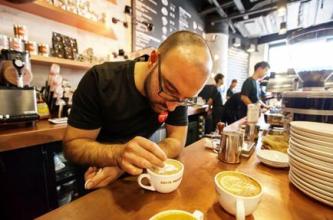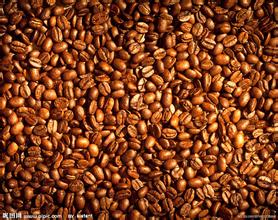Indonesia Wahana Coffee Honey Processing Flavor Description Grinding Scale Variety Introduction
Description of Flavor of Wahana Coffee Honey in Indonesia
Rasuna is a hybrid of Katim and Tibika, which originated in Sumatra. The Vahana estate has planted a total of 90 hectares of Rasuna. It is a new variety planted in Takengon area. Katim has excellent disease resistance but has a life span of only ten years, while Tibika produces less but has a longer life span. Lassouna quietly combines the advantages of the two varieties-high yield and longevity.
Wahana Manor, built in 2005, is located near the village of LeaMungkur in the Sidikalang district of northern Sumatra, Indonesia. Sidikalang has been one of the famous coffee producing areas in Indonesia since ancient times.
The Wahanna Manor is located in an area between 1200 and 1500 meters above sea level, with annual rainfall of 2000 to 3000 millimeters, as well as a cooler climate and a temperature difference of more than 10 ℃ between day and night. Based on the above conditions, the sugar content of red fructose produced by Wahana is more than 13%.
Wahanna Manor covers an area of 468 hectares, of which 250 hectares are used for coffee cultivation, 30 hectares for coffee seedlings, 10 hectares for coffee processing plants, 100 hectares of nature reserves and some vegetable planting parks, fertilizer treatment plants and other equipment.
The processing process and Sumatran characteristics. I describe these treatments in such detail because it is not clear how the soil and atmosphere and the unusual treatment techniques and the three-stage drying each affect the formation of the characteristics of Lindong and Manning coffee. Only one thing is certain. These treatments occasionally produce excellent coffee and are extremely unstable. Only through the merciless selection in the Medan port exporter's warehouse can the deep texture and unique and low-key rich taste of Lintong Lindong and Mandheling Mantenin emerge from the interference of other smells. Known as Mantenin mandheling, it is produced around Lake Toba in northern Sumatra. The finished product has a unique fragrance of herbs and trees.
Gold Mantenin, the Japanese adopted more stringent quality control more than a decade ago. After picking beans manually for four times, they eliminated defective beans and produced gold mantenin with dark green color and equal appearance of beans, creating another wave of market demand. Even Europe and the United States are crazy about it.
The aged Agedmandheling is as sweet as honey. The successful old bean has worn away Manning's inelegant sour taste. The sour ingredients are ripe and converted to sugar, making the coffee more round and sweeter to drink. Manning is like a coffee zombie in the old age of failure, and the taste is hard to taste.
The flavor is very rich, fragrant, bitter, mellow, with a little sweetness. Most coffee lovers drink on their own, but it is also an indispensable variety for blending coffee.

Important Notice :
前街咖啡 FrontStreet Coffee has moved to new addredd:
FrontStreet Coffee Address: 315,Donghua East Road,GuangZhou
Tel:020 38364473
- Prev

Folding of coffee filter paper-how to fold coffee filter paper
The folding of coffee filter paper-how to fold coffee filter paper 1. The next part of the filter paper is folded along the seam and placed in the drip. two。 With a measuring spoon, pour several portions of the coffee powder (about 10 ~ 12g per person) into the drip and tap a few more times before the surface becomes flat. 3. After boiling the river water in a teapot, pour it into a small-mouth kettle and gently turn the boiling water from the central point (the water temperature is about
- Next

Coffee cherry sun processing process-honey treatment coffee bean sun washing
Coffee cherry sun processing-honey treatment coffee bean sun washing process: the picked coffee cherries, including freshly ripe, overripe, and unripe, are all mixed together. If these coffee cherries are not treated separately, the quality of the coffee beans is really poor, because it is mixed with a lot of bad taste.
Related
- What brand of black coffee is the most authentic and delicious? what are the characteristics of the flavor of the authentic Rose Summer Black Coffee?
- Introduction to the principle and characteristics of the correct use of mocha pot A detailed course of mocha pot brewing coffee is described in five steps.
- Which is better, decaf or regular coffee? how is decaf made?
- How much is a bag of four cat coffee?
- How about four Cat Coffee or Nestle Coffee? why is it a cheap scam?
- Which is better, Yunnan four Cats Coffee or Nestle Coffee? How about cat coffee? is it a fake scam? why is it so cheap?
- How about Cat Coffee? what grade is a hoax? which instant coffee tastes better, four Cat Coffee, Nestle Coffee or G7 coffee?
- Process flow chart of coffee making-Starbucks coffee making process what coffee tastes good at Starbucks
- The top ten best coffee beans in the world Rose summer coffee or Tanzanian coffee tastes good
- Yunnan four cat coffee is good to drink?_four cat coffee is a big brand? four cat blue mountain coffee is fake?

